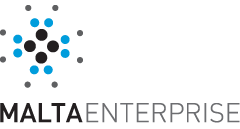ERDF Geosmin


GEOSMIN: Developing a proxy for the measurement of off-flavour compounds in Recirculating Aquaculture Systems (RAS)
ERDF R&D Grant Scheme - CALL 2, Reference ERDF R&D 2010-213
Grant Agreement reference: ERDFEB2009‐235
Project duration: 5th April 2011 - 5th April 2013
The project aim was to validate the relationship between the pigments and off-flavour causing compounds, by using simple and relatively inexpensive fluorometry techniques, and to extend this to creating a proxy for these compounds in fish flesh. A simple, quick and effective technique for determining the risk of detectable amounts of off-flavour compounds in fish flesh could be very useful for predicting potentially costly events.
A benefit of the fluorometric method is that it is recognised as being more sensitive when compared to spectrophotometric analysis and it is not affected by carotenoids (IOCCG 2000). Fluorometric analysis was therefore chosen to assess the concentration of chlorophyll a and phycocyanin in four cyanobacterial species and relate it to the geosmin concentration detected as produced by each species, followed by using the same technique to relate the pigment concentrations to off-flavour compounds in the flesh of a commonly cultured freshwater fish.
In order to achieve the main purpose of the project, which was to develop an improved process for managing cyanobacterial toxins in aquaculture, the research plan was organised so that the objectives with the highest importance, were completed with the highest priority. This ensured that there was a sound scientific result gained from the project, within the constricted time period.

